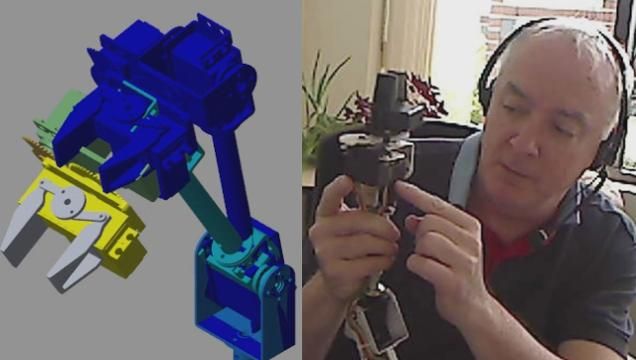Mechatronics with MATLAB and Simulink
Watch MathWorks Engineer Terry Denery demonstrate the use of simulation in the development of mechatronic systems. Although robotics is the iconic example of a mechatronic system, in reality everything from toasters and vacuum cleaners to airplanes, space craft, and automobiles fall into this category. As the name implies, mechatronic systems are developed by a team that has a broad skill set in mechanics, electronics, controls, and software. In this series, you will see how MATLAB® and Simulink® work together as a simulation platform that represents each of these engineering domains. You will discover the value that MATLAB and Simulink have in addressing several interdisciplinary design challenges, such as selecting and controlling electric motors that power the precise motion of mechanical systems. Several of the videos demonstrate rapid deployment of models to real hardware. This illustrates how to use quick tests in order to get important checks on your simulations.
Accuracy, Speed, and Power Consumption
Create a plant model that simulates the mechanics and electronics of a robotic assembly.
Importing Mechanics from CAD Tools
Import the mechanical design of a robotic arm from CAD into Simulink for mechanical motion simulations. Demonstrates a method that enables useful import for almost any mechanical design in less than 30 minutes.
Use MATLAB and Simulink to run tests of DC motors, and use test data to tune DC motor models that reflect performance of tested motor. Also, employ MATLAB and Simulink to program Arduino boards to facilitate tests.
Import mechanics in 30 minutes
Review of joint, motor, gear, and spring definitions within the MathWorks Connection partner, SimWise.
You can "invert" mechanical models to deliver inverse kinematics and inverse dynamics algorithms, which can help you to plan trajectories, select actuators, and design controls.
Employ inverted mechanics models as the basis of feedforward control of a robotic arm.
This video introduces and describes Pulse-Width-Modulation (PWM) algorithms for voltage control.
Playing Pinball Just Like Ben Heck
Terry Denery demonstrates how to model the pinball machine, which was recently shown on The Ben Heck Show.







